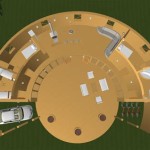How to Eliminate Gnats in Potted Plants Using Hydrogen Peroxide
Gnats can be an annoying nuisance in indoor spaces, particularly infesting potted plants. Their presence not only affects the aesthetics of your indoor greenery but can also harm plant health if left unchecked. Hydrogen peroxide, a common household disinfectant, offers an effective and organic solution to eliminate these pests.
Understanding the Gnats' Life Cycle
To effectively combat gnats, it's crucial to understand their life cycle. Gnats undergo four stages: egg, larva, pupa, and adult. The eggs are laid in the soil, and the larvae feed on decaying organic matter. After pupation, the adults emerge and lay eggs, perpetuating the infestation.
Benefits of Using Hydrogen Peroxide
Hydrogen peroxide possesses several properties that make it an effective gnat repellent and killer:
- Antibacterial and Antifungal: It kills the bacteria and fungi that attract gnats to the soil.
- Oxidizing Agent: It releases oxygen into the soil, creating an environment unfavorable for gnat survival.
- Low Concentration: When diluted correctly, it's safe for plants without causing harm.
Materials Needed
* Hydrogen peroxide (3%) * Water * Mixing container * Watering can or spray bottleStep-by-Step Instructions
Follow these steps to effectively eliminate gnats using hydrogen peroxide:
- Mix Solution: Combine 1 part 3% hydrogen peroxide with 4 parts water in a mixing container.
- Water Plants: Apply the diluted solution to the soil of infested plants. Ensure the soil is thoroughly saturated but not waterlogged.
- Repeat Treatment: Repeat the treatment every 3-5 days until gnat activity subsides.
Tips for Prevention
In addition to eliminating gnats, consider these preventive measures:
- Use Well-Draining Soil: Gnats thrive in moist environments. Use soil with good drainage to prevent waterlogging.
- Avoid Overwatering: Water plants only when necessary. Overwatering creates ideal conditions for gnat reproduction.
- Remove Dead Leaves: Decaying organic matter attracts gnats. Regularly remove dead leaves and debris from the soil.
- Use Sticky Traps: Place yellow sticky traps near infested plants to trap adult gnats.
- Consider Beneficial Nematodes: These microscopic worms prey on gnat larvae, providing a natural form of pest control.
Conclusion
Hydrogen peroxide is a safe and effective solution to eliminate gnats in potted plants. By following the steps outlined above and implementing preventive measures, you can restore the health and beauty of your indoor greenery while minimizing the annoyance of these pests.

How To Get Rid Of Fungus Gnats On Houseplants Nikki Lynn Design

Fungus Gnat Indoor Houseplant Recipe Nikki Lynn Design

3 Hydrogen Peroxide Solution Pest And Soil Treatment Amiesue Com

Pin On Plants

How To Get Rid Of Fungus Gnats Sprouts And Stems

How To Get Rid Of Fungus Gnats Explained In Detail Gardening Channel

Get Rid Of Fungus Gnats 3 Hydrogen Peroxide Treatments

How To Get Rid Of Fungus Gnats On Houseplants Nikki Lynn Design

Pin On Babies Plants

How To Get Rid Of Gnats In Houseplants Treatment Prevention








